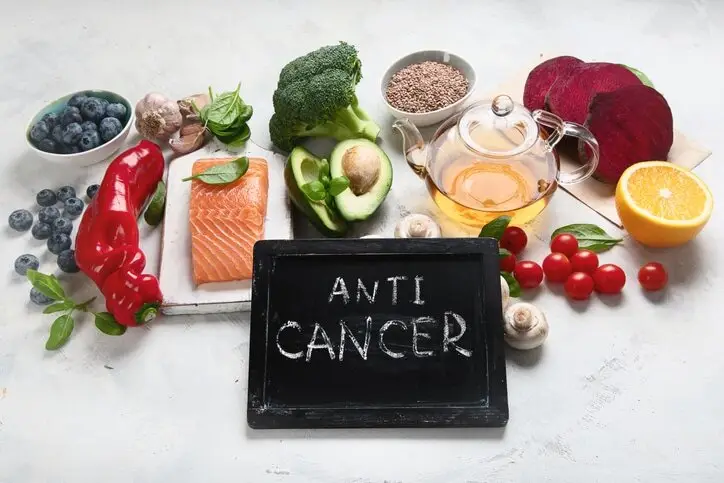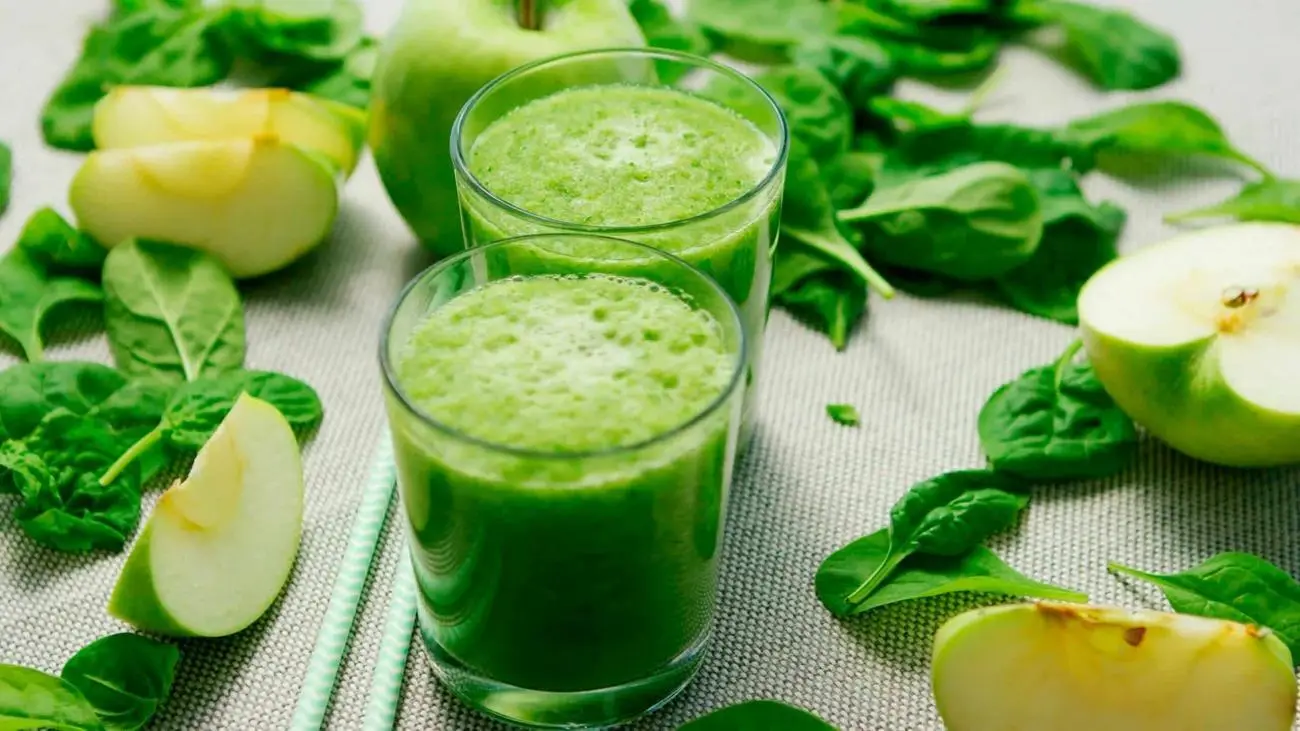How to fight diabetes naturally

What is Diabetes?
Diabetes is a chronic disease characterized by an inability of the body to metabolize carbohydrates properly. This is associated with high blood glucose levels and increased health risks.
Diabetes is a disease of modernity. As the consumption of processed, high glycemic index, and high-fat foods has increased, the rate of diabetes worldwide has risen, leading many people to death.
Type 1 diabetes is characterized as an autoimmune disease in which the pancreas’s cells cannot secrete insulin, so this hormone must be supplemented exogenously.
Type 2 diabetes is associated with central obesity and is characterized by a peripheral resistance of the tissues to the action of insulin. This leads to high levels of insulin and glucose in the blood.
While there are medications to lower blood glucose and improve insulin action in the liver and muscles, research has shown that reversing type 2 diabetes is possible with lifestyle changes, mainly with proper nutrition and supplements.
These are the essential foods that will help you reverse type 2 diabetes:
Fatty fish: fish such as tuna, mackerel, and salmon are rich in omega-3 fats EPA and DHA. The anti-inflammatory power of these fats makes them ideal for combating the high production of free radicals that occurs in people with diabetes. In addition, fish are protein foods, which help to increase satiety between meals and reduce the glycemia peak that occurs after eating. According to research, in healthy overweight people, omega-3 fats from fatty fish help reduce postprandial blood glucose and increase the content of healthy fats in cell membranes. It is important to emphasize that omega-3 fats from animal sources are the most effective and sensitive to oxidation. It is therefore recommended to associate their consumption with food sources of vitamin E (wheat germ, nuts, seeds, etc.) or a supplement.
Green leafy vegetables: leafy vegetables have many benefits for people with diabetes. They are low in calories, rich in antioxidants, and high in fiber. The antioxidants help fight harmful molecules, and the fiber helps slow digestion. This allows glucose from food to reach the blood more slowly, preventing a spike. Leafy vegetables are also excellent sources of compounds with anti-inflammatory activity. In this sense, it is essential to choose sources free of agrochemicals.
Avocado: this fruit, rich in monounsaturated fats, has been shown to be a great choice for people with diabetes. Avocado is an excellent source of vitamins, minerals, and oleic acid. According to one study, avocatin B (AvoB), a fat molecule found only in avocados, prevents incomplete oxidation in skeletal muscle and the pancreas, which reduces insulin resistance.
Eggs: contrary to what has believed years ago, eggs can be a very convenient food for people with diabetes. They possess choline, are rich in healthy fats, and are high in high-quality protein. Eggs are very versatile to be incorporated daily without any health risks. According to research, they provide satiety and can even help control blood sugar when they are part of breakfast.
Chia seeds: are rich in omega 6 and omega 3 fats. They are also an excellent source of fiber. Fiber forms a gel in the stomach and prevents a postprandial glucose spike. In this way, insulin levels are also controlled. According to one study, the consumption of chia seeds led to weight loss and better glycemic control in people with diabetes and overweight, as they increased the level of satiety.
Legumes: Legumes contain a particular type of carbohydrate that is low on the glycemic index and more difficult to digest. This makes legumes a source of healthy carbohydrates for people with diabetes because they help maintain stable glucose levels, provide satiety, and promote healthy intestinal flora. They are also an excellent source of protein. It is recommended that, in people with diabetes, legumes be incorporated as a replacement for high glycemic index cereals such as white rice.
Greek yogurt: is an excellent source of probiotics and high-quality protein. According to research, Greek yogurt provides greater satiety than other types and helps control body weight in people with diabetes. This is due to the presence of a type of fatty acid called conjugated linoleic acid, which helps improve body composition, reduce abdominal fat, and improve the metabolic profile.
Apple cider vinegar: this type of vinegar, rich in acetic acid, can reduce the rate of glucose absorption when consumed before meals, along with a glass of water. In addition, research indicates that apple cider vinegar helps control fasting glucose and glycosylated hemoglobin, a parameter used to measure glucose levels in the last three months.
Berries: are an excellent choice with a shallow glycemic index. They are also rich in anthocyanins, the pigment that gives them color and antioxidant properties. The polyphenol content of red fruits is high, especially in strawberries and cherries. These compounds have been associated with improved insulin sensitivity in overweight people.
Microgreens: Microgreens, especially when formulated as a powder extract, can provide a large amount of antioxidants. Diabetes is a disease that generates high oxidative stress. Consuming microgreens can contribute to improving metabolic status in people with diabetes. According to one study, fenugreek microgreens can help regulate blood sugar levels and enhance cell glucose uptake. In addition, they can prevent enzymatic glycosylation of blood proteins, which is essential to prevent the development of complications. Fenugreek microgreens are rich in a compound called diosgenin, which contains steroidal saponins that reduce inflammation and protect against certain diseases.
| Food | Hypoglycemic compound |
| Fatty fish | DHA and EPA. |
| Green leafy vegetables | Fiber, antioxidants |
| Avocado | Oleic acid, avocatin B |
| Eggs | Proteins, choline |
| Chia seeds | Omega 6 and omega 3 fatty acids, fiber |
| Legumes | Proteins, good carbohydrates, fiber |
| Greek yogurt | Proteins, conjugated linoleic acid |
| Apple cider vinegar | Acetic acid |
| Berries | Polyphenols, anthocyanins, |
| Fenugreek microgreens | Fiber, diosgenin |
Among the must-have supplements to improve blood glucose control and reverse diabetes are:
Chromium Picolinate: Chromium is an essential mineral for proper glucose metabolism. Studies show that taking 200 mcg of chromium picolinate three times a day with meals helps control blood glucose and reduce hyperglycemia and hyperinsulinemia.
Cinnamon essential oil: Cinnamon is a spice with hypoglycemic properties. In addition, it has been shown to improve the lipid profile. All this helps to reduce cardiovascular risk and improve diabetes control.
Alpha-lipoic acid: this compound is a potent antioxidant that we can obtain from certain foods. However, reaching the therapeutic dose to control blood glucose levels is impossible. That is why it is necessary to supplement with 600-800 mg daily. This dose has proven to be effective in reducing the symptoms of diabetic neuropathy, a prevalent condition in people with diabetes that affects the peripheral nervous system.
Bitter melon extract: Bitter melon extract helps reduce blood glucose levels and maintain healthy insulin levels. Research has shown that bitter melon extract can help reduce tissue insulin resistance, reduce cardiovascular complications, and regulate hormones, i.e., metabolism is optimized. It takes 0.5 to 12 grams orally daily for at least 16 weeks.
| Supplement | Dose |
| Chromium picolinate | 200 mcg 3 times per day |
| Cinnamon essential oil | 2-3 drops |
| Alpha-lipoic acid | 600-1800 mg |
| Bitter melon extract | 0,5 a 12 gramos |
Diabetes, especially type 2 diabetes, can be reversed with lifestyle changes. Weight loss, physical exercise, and appropriate foods and supplements can improve tissue sensitivity to insulin, optimize glucose utilization, reduce the rate of complications, and improve the overall quality of life.
References
Wang, J., Zhang, X., Lan, H., & Wang, W. (2016). Effect of garlic supplement in the management of type 2 diabetes mellitus (T2DM): A meta-analysis of randomized controlled trials. Food & Nutrition Research, 61(1). https://doi.org/10.1080/16546628.2017.1377571
Joseph, B., & Jini, D. (2013). Antidiabetic effects of Momordica charantia (bitter melon) and its medicinal potency. Asian Pacific Journal of Tropical Disease, 3(2), 93-102. https://doi.org/10.1016/S2222-1808(13)60052-3
Ahmed, N., Tcheng, M., Roma, A., Buraczynski, M., Jayanth, P., Rea, K., Akhtar, T. A., & Spagnuolo, P. A. (2019). Avocatin B protects against lipotoxicity and improves insulin sensitivity in diet-induced obesity. Molecular Nutrition & Food Research, 63(24), e1900688. https://doi.org/10.1002/mnfr.201900688
Allen, R. W., Schwartzman, E., Baker, W. L., Coleman, C. I., & Phung, O. J. (2013). Cinnamon use in type 2 diabetes: an updated systematic review and meta-analysis. Annals of Family Medicine, 11(5), 452–459. https://doi.org/10.1370/afm.1517
Becerra-Tomás, N., Díaz-López, A., Rosique-Esteban, N., Ros, E., Buil-Cosiales, P., Corella, D., Estruch, R., Fitó, M., Serra-Majem, L., Arós, F., Lamuela-Raventós, R. M., Fiol, M., Santos-Lozano, J. M., Díez-Espino, J., Portoles, O., Salas-Salvadó, J., Serra-Mir, M., Pérez-Heras, A., Viñas, C., … Timiraus-Fernández, J. (2018). Legume consumption is inversely associated with type 2 diabetes incidence in adults: A prospective assessment from the PREDIMED study. Clinical Nutrition (Edinburgh, Scotland), 37(3), 906–913. https://doi.org/10.1016/j.clnu.2017.03.015
Chang, C. R., Francois, M. E., & Little, J. P. (2019). Restricting carbohydrates at breakfast is sufficient to reduce 24-hour exposure to postprandial hyperglycemia and improve glycemic variability. The American Journal of Clinical Nutrition, 109(5), 1302–1309. https://doi.org/10.1093/ajcn/nqy261
Cheng, L. J., Jiang, Y., Wu, V. X., & Wang, W. (2020). A systematic review and meta-analysis: Vinegar consumption on glycaemic control in adults with type 2 diabetes mellitus. Journal of Advanced Nursing, 76(2), 459–474. https://doi.org/10.1111/jan.14255
Helland, A., Bratlie, M., Hagen, I. V., Mjøs, S. A., Sørnes, S., Ingvar Halstensen, A., Brokstad, K. A., Sveier, H., Rosenlund, G., Mellgren, G., & Gudbrandsen, O. A. (2017). High intake of fatty fish, but not of lean fish, improved postprandial glucose regulation and increased the n-3 PUFA content in the leucocyte membrane in healthy overweight adults: a randomised trial. The British Journal of Nutrition, 117(10), 1368–1378. https://doi.org/10.1017/S0007114517001234
Ij, M. (2016). Diet and nutrition reverse type 3 diabetes and accelerated aging linked to global chronic diseases. Journal of Diabetes Research and Therapy, 2(2). https://doi.org/10.16966/2380-5544.117
Poh, Z. X., & Goh, K. P. (2009). A current update on the use of alpha lipoic acid in the management of type 2 diabetes mellitus. Endocrine, Metabolic & Immune Disorders Drug Targets, 9(4), 392–398. https://doi.org/10.2174/187153009789839147
Vuksan, V., Jenkins, A. L., Brissette, C., Choleva, L., Jovanovski, E., Gibbs, A. L., Bazinet, R. P., Au-Yeung, F., Zurbau, A., Ho, H. V. T., Duvnjak, L., Sievenpiper, J. L., Josse, R. G., & Hanna, A. (2017). Salba-chia (Salvia hispanica L.) in the treatment of overweight and obese patients with type 2 diabetes: A double-blind randomized controlled trial. Nutrition, Metabolism, and Cardiovascular Diseases: NMCD, 27(2), 138–146. https://doi.org/10.1016/j.numecd.2016.11.124
Wadhawan, S., Tripathi, J., & Gautam, S. (2018). In vitro regulation of enzymatic release of glucose and its uptake by Fenugreek microgreen and Mint leaf extract. International Journal of Food Science & Technology, 53(2), 320–326. https://doi.org/10.1111/ijfs.13588
Disclaimer: The information provided in this article is for educational and informational purposes only and is not intended as medical advice. It is not a substitute for professional medical advice, diagnosis, or treatment. Always seek the advice of a qualified healthcare provider with any questions you may have regarding a medical condition. The author and publisher of this article are not responsible for any adverse effects or consequences resulting from the use of any suggestions, preparations, or procedures described in this article.













